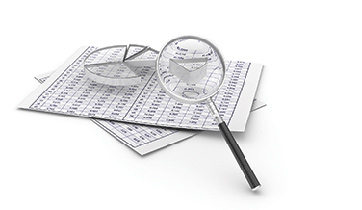Rod Bailey, a small business management consultant specializing in green industry companies, writes in response to Daniel Gordon’s February 2016 article, “Principles of tax depreciation.”
Daniel Gordon, CPA, argues that landscape contractors should take full advantage of Section 179 accelerated tax depreciation and bonus depreciation allowances for determination of their taxes at the end of the year. Gordon is dead right on this issue, and I routinely recommend this treatment to clients in my consulting practice if their CPAs have not already treated their depreciation in this manner.
My concern is when Section 179 depreciation is used in monthly and year-end financial reporting for managing the business, it can be misleading.
Yes, I’m one of the MBAs Gordon referred to and, yes, I’m concerned with the ratios managers should compute to guide their pricing and other management decisions. I recommend that my clients keep their regular books using either straight line depreciation or double declining balance depreciation (DDB) methods and then let their CPAs make the simple adjustments needed at year-end when determining and reporting the income taxes due.
I have three reasons for concern about using Section 179 depreciation and bonus depreciation in management financial statements.
1. It overstates operating costs in the year taken and understates operating costs in subsequent years. It only works well for those businesses that are experiencing significant growth rates and thus need to buy additional equipment every year. If your pricing decisions are based on overhead recovery pricing (and they should be), widely fluctuating depreciation costs (a component of your overhead) from year to year can leave you in an “over-costed” (and thus an “overpriced”) situation.
One client complained that he really had trouble getting his pricing down into a competitive range in a tight market. I checked his depreciation accounts and found that his CPA was using Section 179 depreciation in his management financial statements. We put his financial statements on a straight line depreciation basis and he reduced his reported costs by a significant percentage and got his pricing back into a competitive range.
2. It understates the value of assets on the balance sheet. With understated asset values, you have reduced your owner’s equity account, which can affect any number of ratios used by your banker, your bonding company and other financial stakeholders in your business. One of the most significant ratios calculated is the debt-to-equity ratio, which is computed as your total debt divided by your reported owner’s equity. Financers who consider advancing you capital lease money regard this ratio as important, particularly if the ratio is over 1:1. The median contractor is at .80 to 1.00, according to the National Association of Landscape Professionals (NALP) Operating Cost Study for the Green Industry.
Another ratio I compute is called the asset newness ratio. It is computed as the depreciated value of assets divided by the original cost of the assets. Typically, if that ratio is below .45 to 1.00 I expect to see a bunch of junk when I drive into your yard, leading one to believe that you may be facing heavy equipment renewal costs (putting more pressure on your debt-to-equity ratio and borrowing costs). Even new equipment, if fully Section 179 depreciated, will look like junk on your balance sheet.
3. Yes, it does skew many of the ratios you should be using to manage your business. The comparative financial data (and ratios) that are reported in the periodically updated NALP Operating Cost Study for the Green Industry use financial data based on accrual accounting methods including straight line or DDB depreciation methods. If you are to meaningfully compare yourself to this data (and you should), you need to have financial results that are truly “comparative.”
Unless you give your banker a copy of the NALP Operating Cost Study (and you should), he will use the banker’s best friend: Robert Morris Associates (RMA) data, a compilation of financial statistics and ratios published by SIC Code for the banking and financial industry. If you think NALP’s ratios are tough, wait till you see the RMA’s.
I support Gordon’s recommendation that you should use Section 179 and bonus depreciation methods for your tax return accounting for all the good reasons he lists. I firmly believe, however, that traditional methods of depreciation (straight line and/or DDB) give you much better information for managing your business, for determining your pricing and for growing profitably. Please take this article to your CPA and bookkeeper and discuss the options with them. They should be able to give you depreciation schedules computed for either method you choose.
Bailey is a consultant with Alder Springs Enterprises. He has 30 years of experience running his own landscape business in Western Washington. He is a past president of ALCA (now NALP). Reach him at RodLBailey@hotmail.com
Photo: iStock International Inc.


